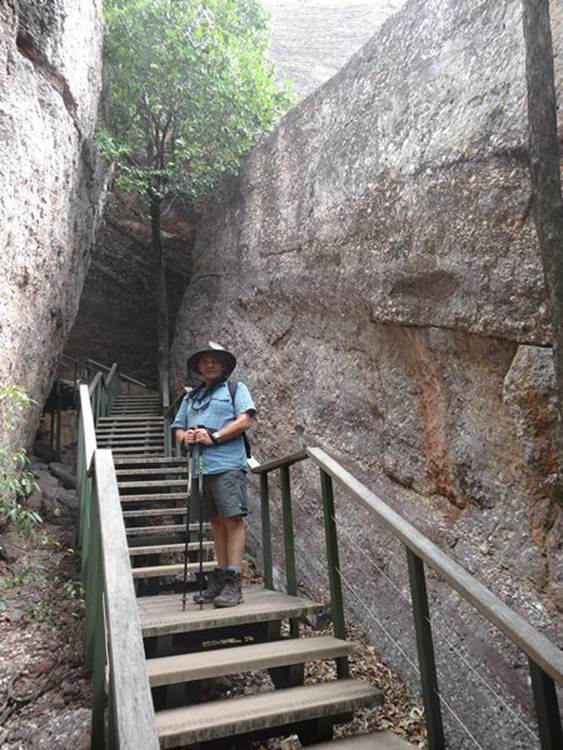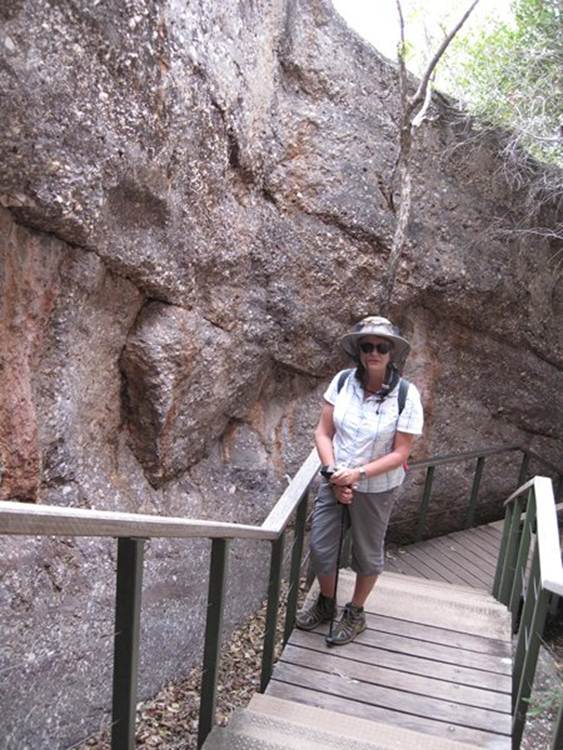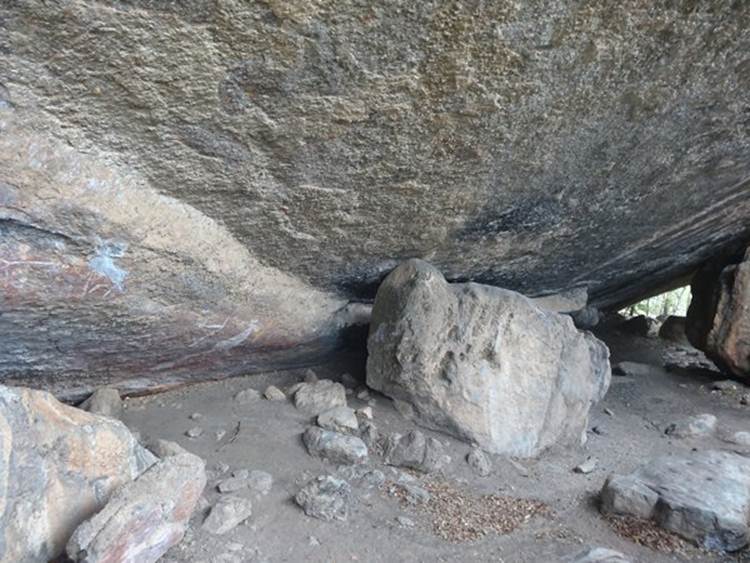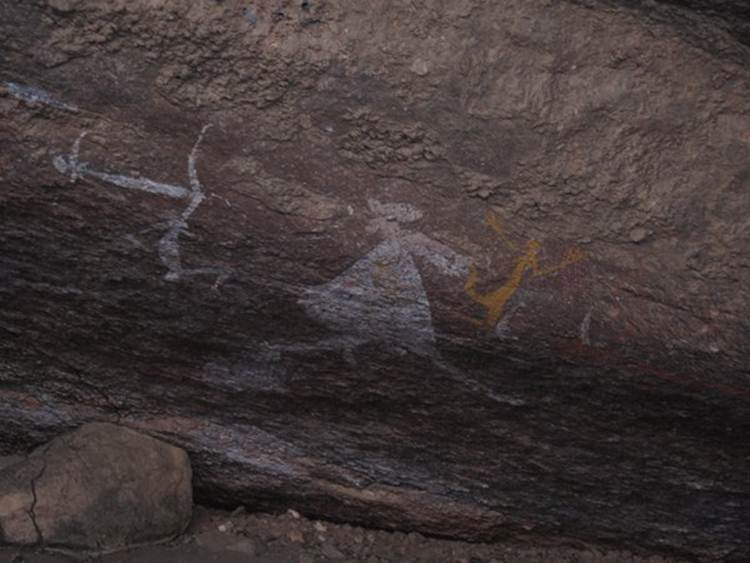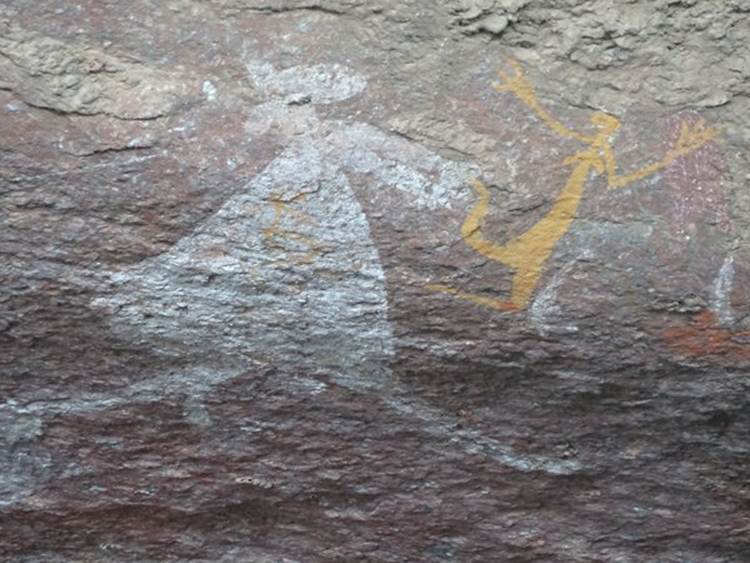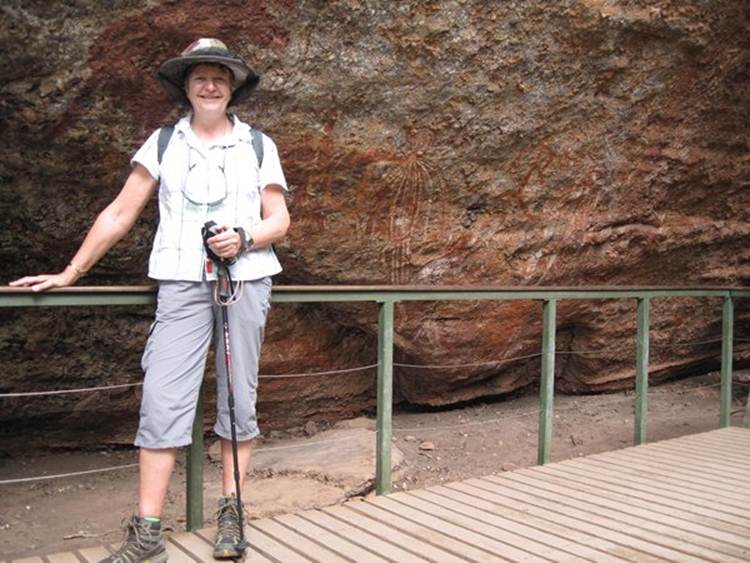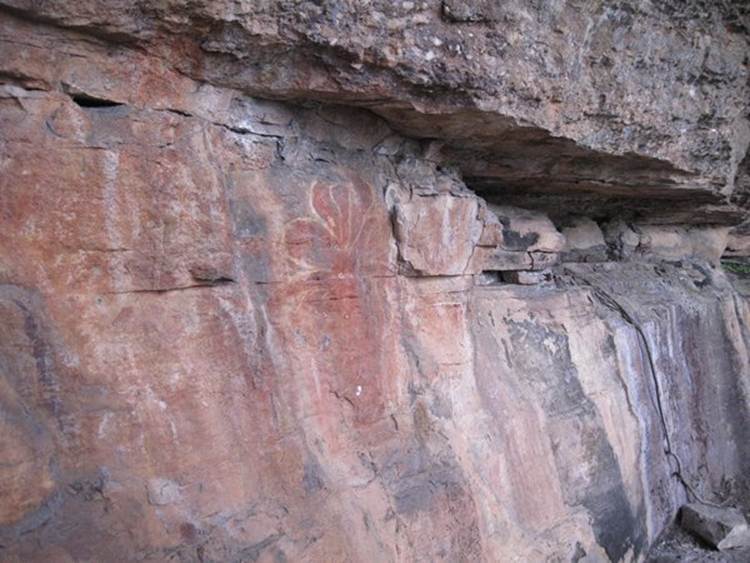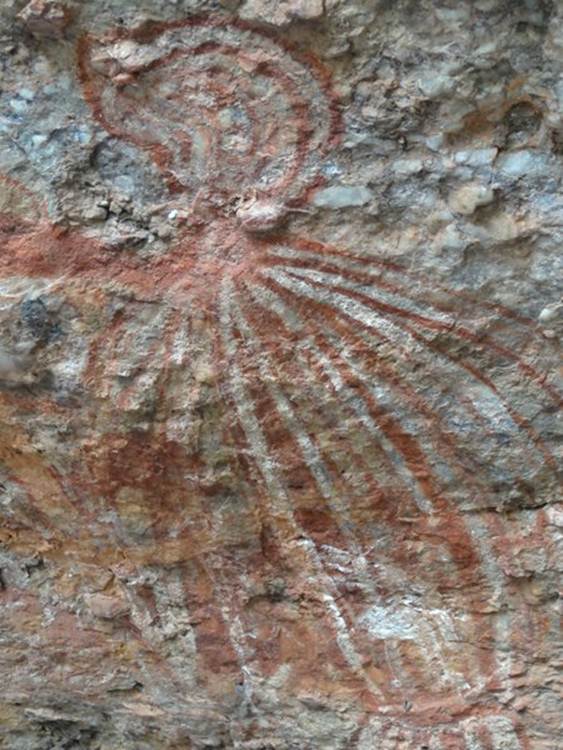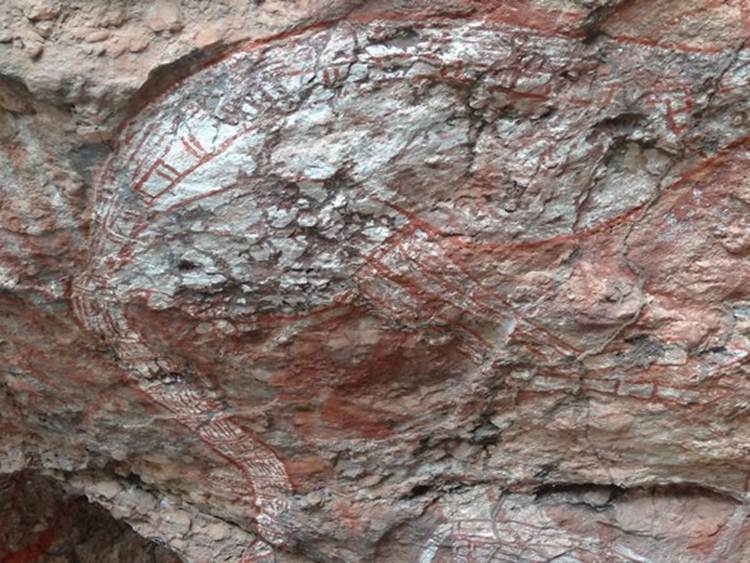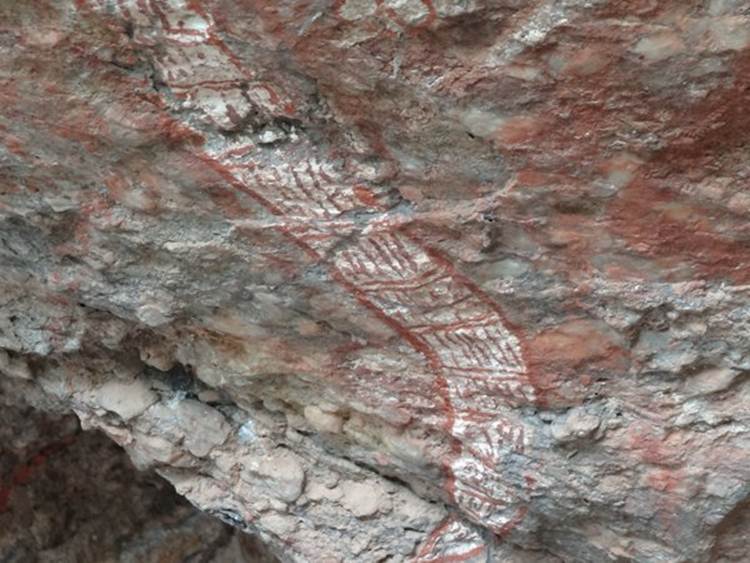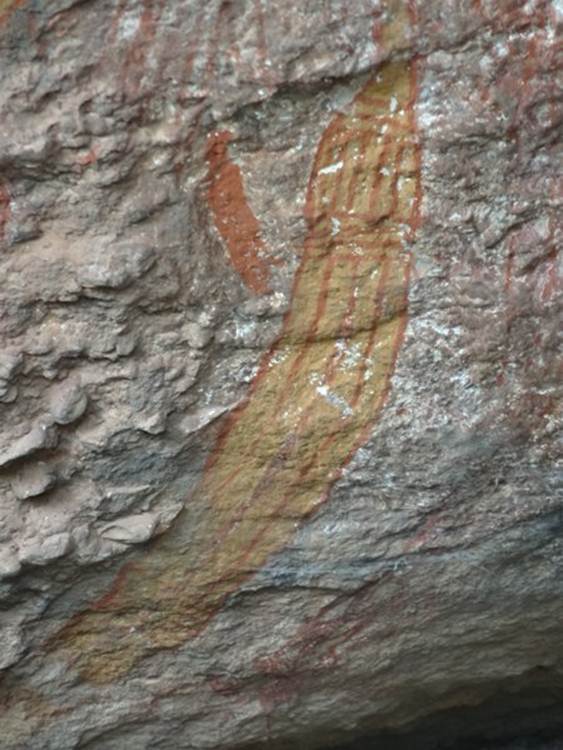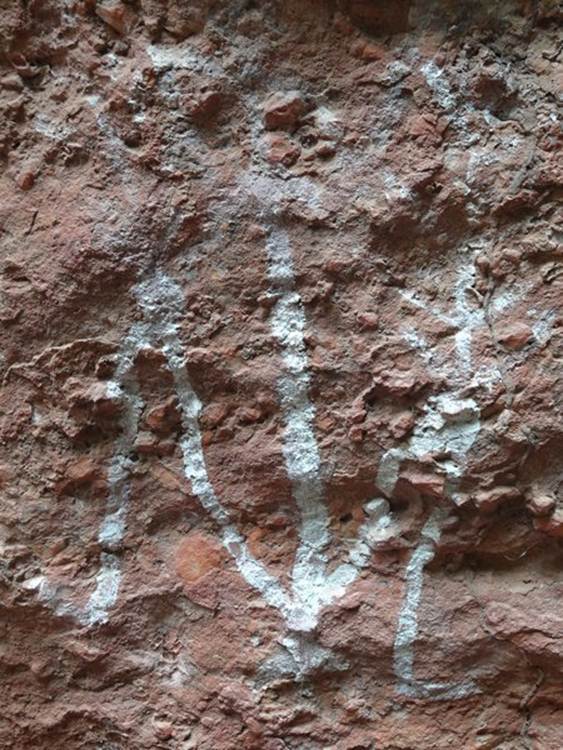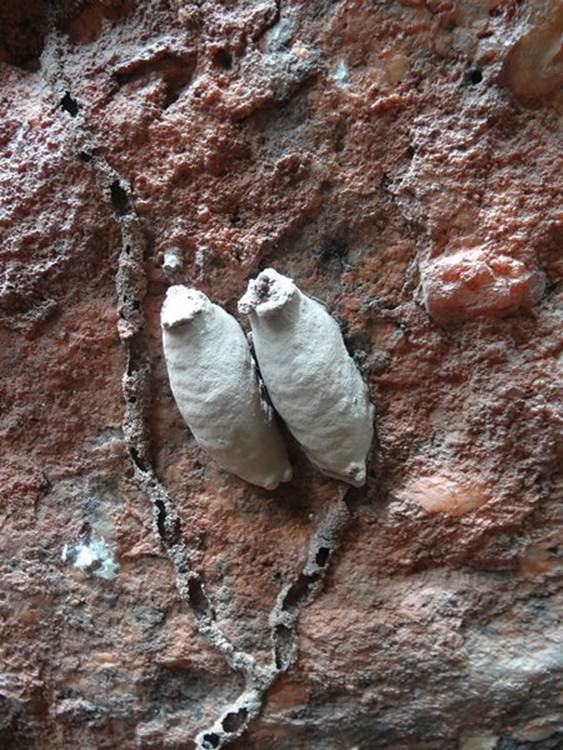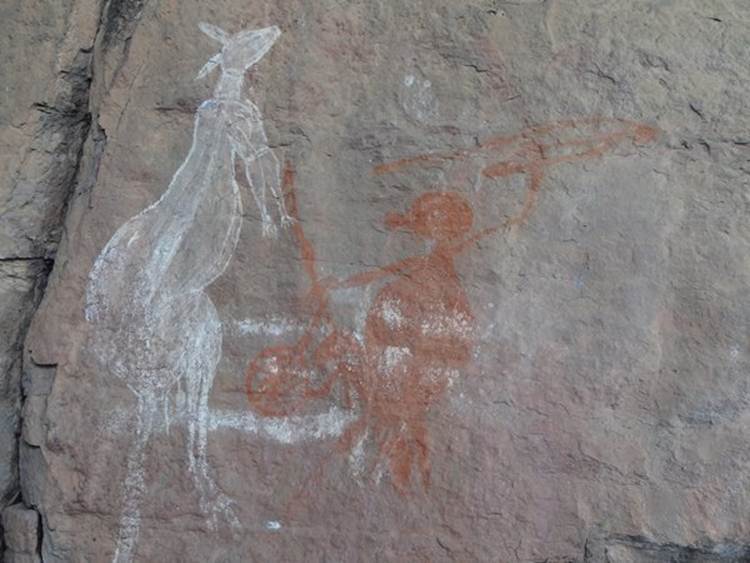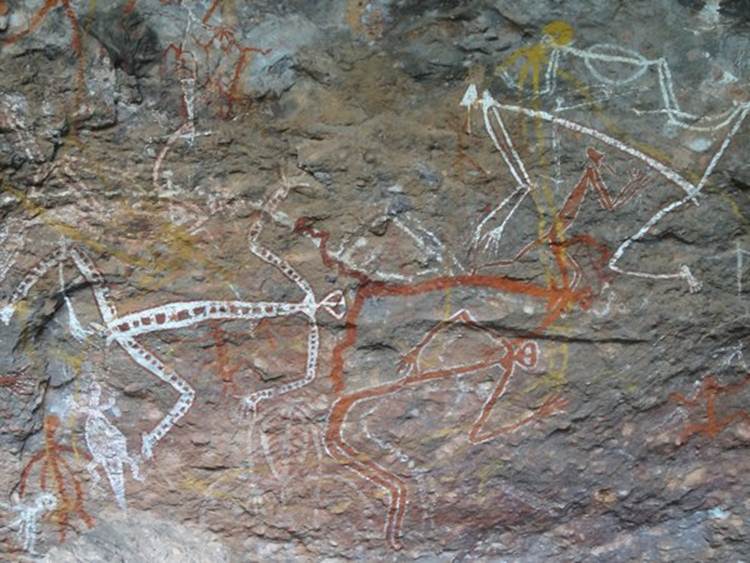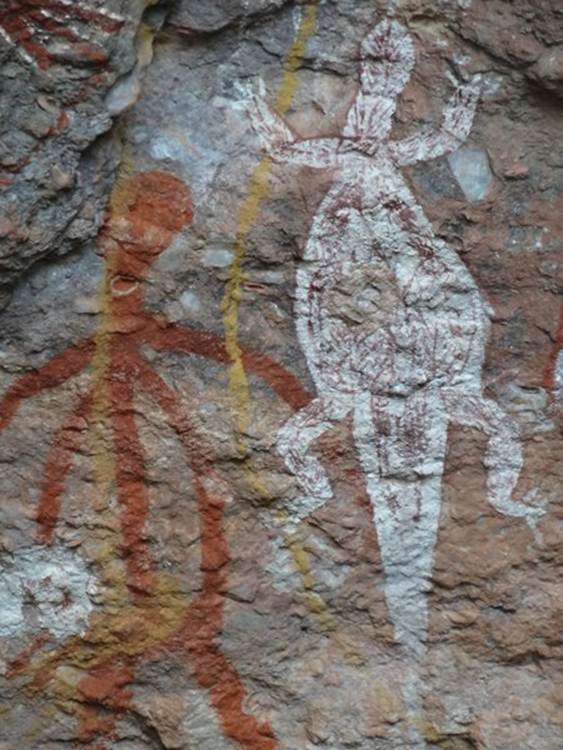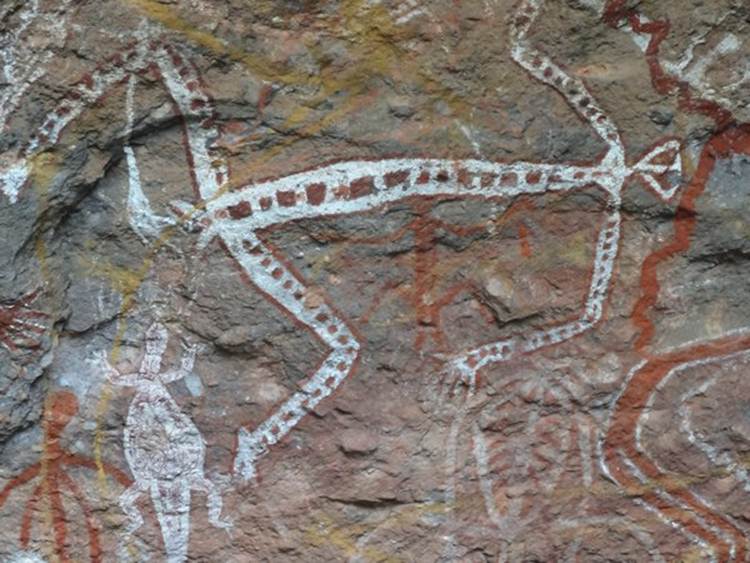Kakadu - Nourlangie art site 1

Later in the day we went to Nourlangie. Non-aboriginal people (balanda) came here and thought the place was called Nourlandja and called this rock Nourlangie rock, hence the name. The place has two true names. Burrunggui (Boor-oon-goy) is the name given to the higher parts and Anbangbang (Arn-barng-barng) to the lower areas. Aboriginal people came here during the wet season. We did a 1.5km walk that takes you to a couple of galleries and a shelter. You can see why aboriginals came here, here’s Paul going through one of the gaps between the rocks, towards the Anbangbang shelter. Lovely and shaded with cool breezes funnel between the rock faces. A conglomerate again, look at those embedded pebbles.
And here’s me.
This is the Anbangbang shelter. Aboriginal people have been coming here for the last 6000 years. Artefacts have been excavated from the Anbangbang shelter which indicates people stopped off here when the climate was a lot drier, over the last 20,000 years
with a dancing wallaby, or kangaroo, and a man and woman.
A lot of art work you can’t ever see clearly as, unless the wall is vertical, it’s painted on the ceiling / overhang. Interesting as the wallaby has a dress on!
Most of the artwork is very faded, you can just about make it out behind me in the incline gallery.
The entire wall is covered with faded artwork.
Here are some shots of not sure what. Could be a person, although looks like an octopus. Not the right number of arms though and the artists are generally very accurate.
This is some sort of bird, could be a magie goose, which supposdely get a lot of around here but we ain’t seen any yet. Anyway the artwork denotes skeleton
The neck region, the patterns could be vertebrae.
No idea what this is.
Somebody sitting.
A couple of insect nests.
Here’s a kangaroo and a hunter with throwing stick and spear.
Some were a bit clearer. Aboriginals love to dance, apparently. In traditional dances the steps and the movements depend on the meaning of the ceremony or story, and obviously the part being played by the dancer, and the rhythm of the clapping sticks (which Paul has bought) and the didgeridoo (guess what). You can see why some people think alien when you look at the heads on some of these figures.
Here’s a close up of the two iguanas in the bottom LH corner.
And a close up of dancing man.
|
